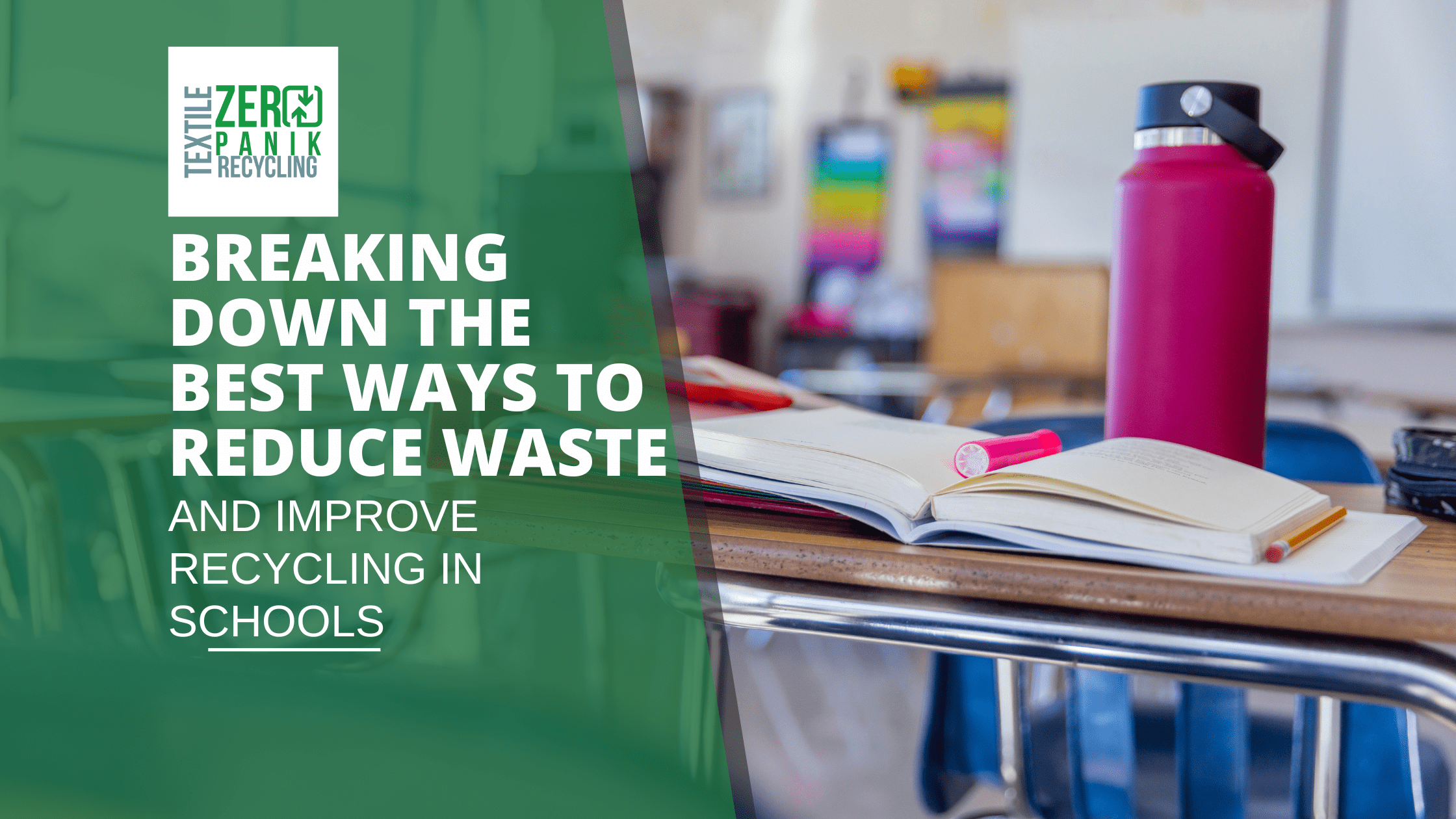
Why is reducing waste and recycling important in schools?
In light of the ongoing environmental crisis, waste and recycling is becoming an increasingly urgent issue. Schools need to start engaging in conversations about more sustainable practices, such as recycling and other alternatives to reduce landfill waste. Educating faculty, staff, and students on best practices can be an effective way for schools to support sustainability initiatives. Reducing waste and recycling in schools is important for several reasons, including, environmental conservation, cost-savings, promoting sustainable practices, and strengthened reputation.
What are some ways to reduce waste and recycle in schools?
One of the easiest ways for schools to reduce landfill waste is to start a composting program. By teaching students about composting basics and setting up composting bins at the school, organic waste from cafeteria food and gardening will be reused and have little impact on the environment. Compost can be used to enrich the soil in a school garden, and using compost from the school will ensure that no chemicals are used.
In addition, teaching students about separating trash for recycling is another great way to reduce waste and improve recycling. Not only does each material have to be separated correctly, but certain labels and residue must also be removed before it can be recycled. Students can be grouped and assigned tasks such as rinsing containers, removing labels, and recycling appropriately according to their local protocol.
Schools can benefit from organizing toy and clothing drives to encourage donations, as an efficient way of reducing waste and raising valuable funds. These campaigns likewise provide a great opportunity for conversations about sustainability and the need to decrease consumption for environmental protection.
Finding solutions for disposing of items like batteries, light bulbs, and electronics can be a challenge for schools. Thankfully, there are several resources available to help them with this task. Online communities, local organizations, free services, and exchange programs can all provide responsible ways to recycle larger items. With these options accessible, schools will have the tools they need to dispose of the necessary materials.
How can teachers and students be involved in reducing waste and recycling in schools?
There are many ways that teachers and students can be involved in reducing waste and recycling in schools. Here are some ideas:
- Encourage students to reduce the amount of waste they create. This can be done by encouraging them to use reusable water bottles and lunch boxes and to recycle or compost their food and paper waste.
- Educate students to recycle and compost materials. This can be done by setting up recycling and compost bins in the classroom and school grounds, and by teaching students about the benefits of recycling and composting.
- Motivate students to use recycled materials. This can be done by incorporating recycled materials into class projects, and by using recycled paper for school memos and newsletters.
- Teach students to reduce energy consumption. This can be done by turning off lights and computers when they are not in use, and by using energy
What are some benefits of reducing waste and recycling in schools?
Reducing waste and recycling in schools is important for several reasons, including:
1. Environmental conservation: By reducing waste and recycling, schools can help conserve natural resources, reduce pollution, and minimize the amount of waste that ends up in landfills. This can help to mitigate the negative impact of human activities, such as deforestation and climate change.
2. Cost savings: Implementing sustainable practices can also help schools to save money on waste disposal and other related costs. By reducing waste, schools can avoid the expenses associated with landfilling, transportation, and other waste management activities.
3. Foster a culture of sustainability: By promoting sustainable practices in schools, students can learn the importance of being responsible citizens. By involving students in recycling and waste management programs, schools can instill in them the values and habits necessary to embrace a more sustainable lifestyle.
4. Enhanced reputation: Schools that are committed to sustainable practices are likely to be viewed in a positive light by the communities they serve. By promoting their efforts in waste reduction and recycling, schools can enhance their reputation as responsible institutions that care about the environment and the well-being of their students.
Overall, reducing waste and recycling in schools is a critical step toward building a more sustainable future. By educating students and promoting environmentally-friendly practices, schools can help create a generation of responsible citizens who are committed to protecting the planet for future generations.
How can schools get started with reducing waste and recycling?
Fortunately, there are resources available that offer help with reducing waste and improving recycling within educational contexts. The California Department of Resources Recycling and Recovery (CalRecycle) has developed a variety of recycling education resources for schools in California. These resources include lesson plans, teaching guides, and poster sets that can be used to educate students about recycling and waste reduction.
CalRecycle’s recycling education resources are aligned with the California State Content Standards for Environment and Ecology. They are also available in English and Spanish. For more information on CalRecycle’s recycling education resources, please visit their website: https://www.calrecycle.ca.gov/schools/educate/
As students learn more about sustainability and environmental stewardship, they can take part in developing better waste reduction and recycling systems at their schools. Taking these steps to decrease the number of leftover materials and recycle responsibly will give students valuable skills that they’ll carry throughout their lives.
At the end of the day, reducing waste and improving recycling in schools is an essential part of the conversation when it comes to sustainability. By teaching facilities, staff, and students the basics of composting, how to separate and properly recycle, the importance of organizing clothing donation drives, and how to find free resources to dispose of larger and hard-to-recycle items, schools can significantly reduce their environmental impact and the environmental impact of their community.
